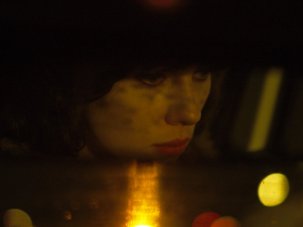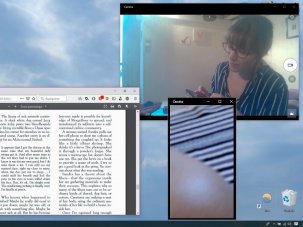Claire Denis is a director who refuses tidy categorisation. Her work explores sexual difference, but she is not easily situated within feminist canons. She is often elliptical in form but her aesthetics do not follow a specific experimental tradition. She is concerned with post-colonial narratives but rarely unequivocal in her politics. However, these ambivalences do not amount to a cinema of discomposure; rather, Denis is a director of exacting craft, informed precisely by grey areas.
Trouble Every Day is available to rent or buy on VoD services.
Claire Denis’s new film High Life is in UK cinemas now. A season of her films, The Original Sin of Claire Denis, runs at BFI Southbank, London, in June 2019.
For a director whose work is so opaque, it at first appears surprising that Denis’s oeuvre would include genre film. Genre, when thought of as a rigid set of themes and aesthetics, seems like an uneasy match for Denis’s slipperiness: yet Denis first forayed into the horror genre over a decade ago with Trouble Every Day (2001) and tackles science fiction with her latest, High Life (2019). Denis challenges how we may think of genre; her work pushes its limits and exposes its elastic edges. The grey areas of her work thrive by blurring the boundaries of genre, rather than becoming contained by them.
This video explores Denis’s horror film Trouble Every Day. Whilst it utilises horror tropes such as cannibalism and hysteria, the film most crucially disturbs the medium itself, infusing the image with the threatening promise that there is a horror completely unknowable to us. It evokes such a notion through the concept of skin. Skin is a membrane, a barrier between an external and internal. Film too is a membrane, a surface upon which the image dances. The oscillating closeness and distance of Denis’s camera invites us to touch the skin whilst also provoking curiosity about what lies beneath. This curiosity is what flares any cannibalistic impulse. Denis invites us to claw at the image by evoking an unrepresentable notion. The horror of the film is in the knowledge that its horror cannot be known.
It was during the process of creation that I realised the video essay process itself is bound up in Trouble Every Day’s notion of skin. If the film is flesh, then my own act of slicing into the film is like surgery. I’ve hacked up the film, severed its montage in order to stitch together my own Frankenstein’s monster of its referent. The incitement to look beneath the skin prompted me to destroy it, like a critical version of the cannibalistic acts of the film. Fittingly then, as I picked the scab of the image, I was offered no illumination, no answers and no notion of the unrepresentable horror evoked. Instead, despite my attempts at edification, I was left the same way Tricia Vessey’s character is at the end of the film – staring straight into the reaffirmation of the unknown.
-
The Digital Edition and Archive quick link
Log in here to your digital edition and archive subscription, take a look at the packages on offer and buy a subscription.








